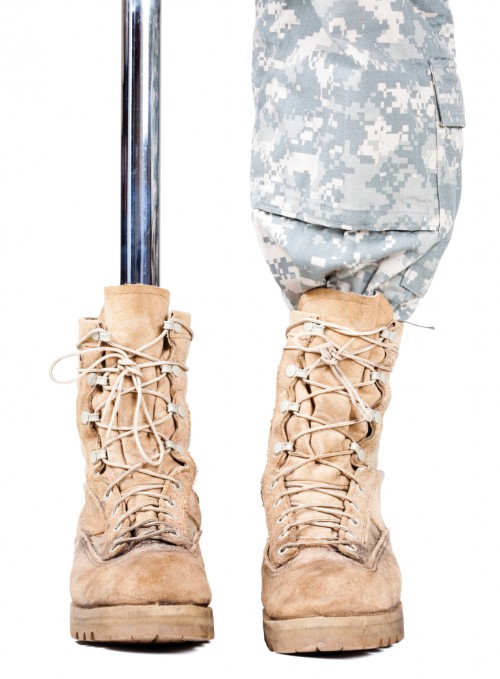Media Inquiries
- 615-322-6397 Email
Latest Stories
- Key takeaways from the 2024 Summit on Modern Conflict and Emerging Threats
- Computing Catalyst Working Group to shape expanded computing resources and capabilities to advance university-wide research
- Vanderbilt University and Metro Nashville Public Schools launch partnership to boost college admissions from Nashville schools

A $1.1 million U.S. Department of Defense grant will support development of a new surgical device that could help repair severed nerves, allowing soldiers and cancer patients to regain use of a limb and avoid amputations after a catastrophic injury or cancer surgery.
“The real challenge in nerve repair and limb salvage, particularly for our wounded warriors, is that when you have an injury near the spinal cord, it takes such a long time for the nerve to regrow from the site of the injury all the way out to the target muscle like the forearm or the hand,” says Dr. Wesley Thayer, who is leading the investigation. Thayer, assistant professor of plastic surgery and orthopaedic surgery and rehabilitation, is also chief of plastic surgery for the Veterans Affairs Tennessee Valley Healthcare System in Nashville.
Nerves typically grow at a rate of only one millimeter per day, and muscles develop permanent atrophy after one year—so restoring limb function is a race against time. Even when bone and blood vessels can be salvaged after a battlefield wound, many soldiers still undergo amputations because it takes nerves too long to regrow, making the limb unusable.
Vanderbilt investigators have been testing the use of a polyethylene glycol (PEG) solution that is applied to both ends of the severed nerves. PEG is a biologic compound that drives water away from the cells, making the cell membranes sticky. The application of PEG helps the severed nerve stumps stick together and begin to function.
In earlier tests, the researchers found they must first wash the nerve ends with a calcium-free solution because calcium seals the nerve axons and blocks repair. In addition to the calcium-free solution and PEG, investigators coat the nerve ends with an antioxidant called methylene blue.
Using this PEG-fusion method, Thayer and his colleagues have been able to restore nerve function and leg movement in animal models.
With funding from the grant award, Vanderbilt engineers and investigators at AxoGen Inc., a private corporation with FDA-approved nerve-repair devices, will collaborate with Thayer on the design of a new surgical device that will allow the PEG solution to be delivered to nerve endings in a uniform and predictable fashion. The device would attach via ports to nerve cuffs that are already commercially available.
“The hope for this technology is that if we are able to salvage even a portion of the axons that have been severed and keep them alive, we may be able either to regain early function in the limb or preserve just enough enervation to keep those muscles alive until the remainder of the axons can grow out and reach their target,” says Thayer. “This could potentially become a real game changer for which limbs might be salvageable in this setting.”
The PEG solution itself also has shown little toxicity and should prove safe for use in humans. “The buffered solution, the methylene blue and the polyethylene glycol are all commonly used, benign substances,” says Thayer. “That’s what’s so special about this technology, because there’s very little toxicity with any of the products involved in the actual fusions.”